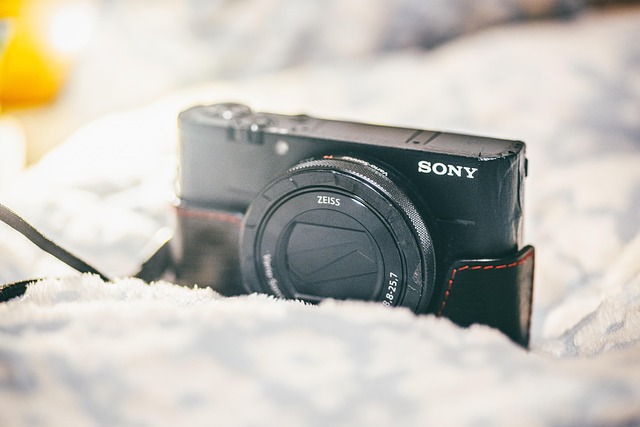Troubleshooting Common Issues with Travel-Friendly Printers
Portable printers offer compact convenience for travel, mobile work, and on-the-go photo printing. This article outlines common connectivity, power, and print-quality issues and practical troubleshooting steps to keep a travel-friendly printer functioning reliably during trips.

Travel-friendly printers bring printing capability to mobile work, remote events, and photo outings, but their compact design and wireless features introduce unique troubleshooting needs. This article explains typical setup, connectivity, battery, and print-quality problems you may encounter with thermal or ink-based portable devices, and offers clear maintenance and troubleshooting steps to improve reliability and resolution while traveling.
Why setup and connectivity matter for mobile printers
A correct setup is the foundation of reliable mobile printing. Many compact printers rely on wireless or bluetooth connections to smartphones, tablets, and laptops; incorrect network settings, outdated printer firmware, or incorrect app permissions can prevent successful pairing. During initial setup confirm the printer is in pairing or access point mode if required, and that your device’s wifi or bluetooth radios are active. For wireless printing over a local network, ensure the printer and device are on the same network segment. Also check the manufacturer app for guided setup steps that can streamline connectivity and print-resolution options for photos.
How to troubleshoot wireless and bluetooth pairing
If your printer won’t pair, start by restarting both the printer and the host device. Clear any previously saved bluetooth pairings on both sides and attempt a fresh connection. For wifi printing, verify the SSID and password and consider temporarily disabling VPN or firewall apps that could block discovery. If the printing app reports a connectivity error, toggle airplane mode or forget the network and reconnect. For intermittent wireless drops, examine interference sources such as crowded wifi channels, microwave ovens, or other bluetooth devices. Updating device drivers or the printer’s firmware can resolve compatibility and protocol issues.
Managing power: battery and portability tips
Battery-powered operation is a major advantage for travel, but degraded or partially charged batteries cause erratic behavior. Always start a session with a fully charged battery and verify the battery status via the device indicator or app. If a printer won’t power on, try a known-good cable and charger and allow several minutes of charging before retrying. To maximize portability and battery life, reduce unnecessary power-hungry features like constant bluetooth scanning or high-brightness displays. Carry a compact power bank compatible with the printer’s charging standard for extended trips, and consider keeping spare cables organized for quick setup in different locations.
Handling print quality: resolution, photo, and media issues
Print defects can stem from incorrect media type, resolution settings, or hardware faults. For photo printing, ensure you’ve selected the appropriate resolution and media profile in the app; higher resolution settings improve detail but use more memory and processing time. Compact thermal or inkless printers have specific paper types—using incompatible paper leads to poor image fidelity or smudging. For ink-based portable models, check cartridge seating and run the printer’s print-head cleaning utility if colors are streaky or missing. Test with a diagnostic page to isolate whether the issue is driver-related, media-related, or hardware-related.
Routine maintenance for compact and mobile printers
Regular maintenance extends performance for travel printers. Clean feed rollers and the print-head contact points gently with manufacturer-recommended tools or alcohol wipes to prevent paper jams and improve resolution. For thermal and inkless models, remove dust and debris from the platen and print sensor. Periodically check for firmware updates that can improve compatibility and fix bugs related to setup and connectivity. Store the printer in a protective case to avoid shocks, humidity, or dust exposure when on the move. Keep a small toolkit—cables, spare paper, and cleaning cloths—for quick fixes during travel.
Troubleshooting steps summary and when to seek support
When facing issues, use a stepwise approach: verify power and battery, confirm firmware and app updates, restart both devices, and isolate the problem with diagnostic pages or alternate host devices. If connectivity persists as the primary issue, test both bluetooth and wifi modes, and evaluate environmental interference. For persistent print-quality failures after cleaning and head alignment, consult the support resources provided by the manufacturer, including user manuals, support forums, and official service centers in your area. If hardware faults are suspected—unusual noises, persistent paper feed failures, or electrical issues—professional repair or evaluation may be necessary.
Conclusion
Portable printers offer useful flexibility for travel and on-the-go photo or document needs, but their compact and wireless designs require attentive setup, routine maintenance, and a methodical approach to troubleshooting. By confirming connectivity settings, managing battery and media correctly, and performing regular cleaning and firmware updates, most common issues can be prevented or resolved to maintain consistent print resolution and reliability while traveling.






